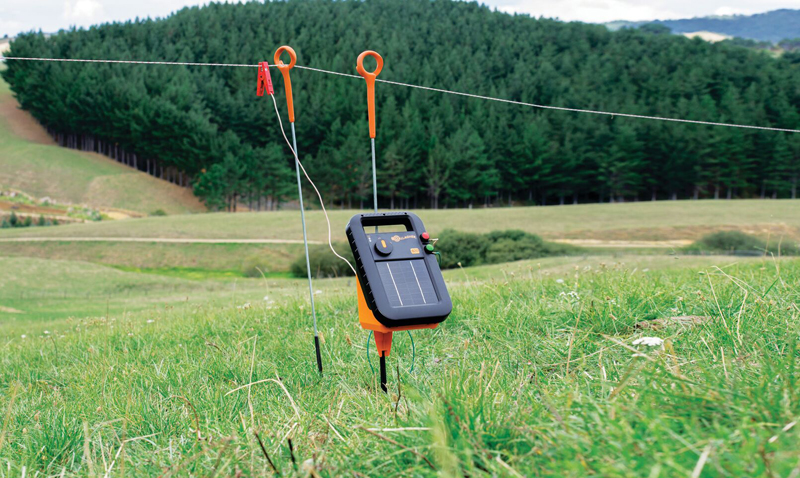Making lighter work - moving one fence at a time
Finding the right grazing and pasture management strategy for your individual farm or ranch can take some trial and error
Saturday, 01 January, 2022

What works well for one producer may be downright disastrous for another – which is exactly what Mike Clark of Green Acres Farm found out, the hard way.
"I had almost no grass in the summer for my cattle to graze," says Clark, who together with his wife, Susan, raise South Poll cattle outside Knoxville, Tenn. "We were using a basic rotational grazing system, splitting our 90 acres into nine paddocks and grazing our cattle for one or two weeks per paddock. As summer rolled around, the pastures were bare."
Clark knew there had to be a better way and participated in several grazing seminars to find the best pasture management program for his farm.
By shifting his strategy to a strip rotational grazing system, Clark now has his cattle on smaller pastures for fewer days.
Instead of nine pastures, our cattle graze approximately 80 paddocks. Cattle used to spend about a week in each pasture, now we move our cattle daily, explains Clark. "Utilizing a strip grazing strategy gives us 75-80 days of forage growing with the ability to graze again."
Clark explains he was also able to reduce his hay feeding by approximately 80 percent. "We fed hay in the fall for about a month and kept our herd on about 15 percent of the farm in the prime forage growing season of late fall. We then were able to graze 75 days on about 77 acres of stockpile forage grown since the summer."
"Simply put, we graze an acre a day," Clark says. "This strategy has paid off for our farm more than any other grazing strategy out there."
"Some cattle producers are intimidated by rotational grazing because they think it's going to be too hard or take up too much time. But, I don't know any cattle producers who don't check their cows once a day. So why not move a fence while you're out there," he says.
Clark wanted to find a quick and easy system to move his cattle from one temporary paddock to another.
"If we are going to move fences each day, we wanted to find the most effective way," says Clark. He found the solution through Gallagher's Tumblewheels.
"We loved the idea of Tumblewheels and currently use them in our pasture management strategy because they are an easier, more efficient and faster way to move fence," Clark says.
Jeremy McGill, Gallagher Territory Manager agrees. Tumblewheels act as a rolling fence post, allowing cattle producers the ability to move a fence line in a matter of minutes. Each wheel features six spokes and a unique center hub that maintains power while the fence is being moved. As the Tumblewheel turns, four of the six spokes are hot while the remaining two spokes touching the ground are dead.
Clark not only finds the Tumblewheels to be effective, he also finds them to be made well and cost-effective. "Tumblewheels will save you money because they don't require you to have additional fence set-ups in your pastures. You don't need to set up another fence – you just move it."
Clark's commitment to utilizing quality products on his farm doesn't stop with Tumblewheels. In fact, all of his 80 paddocks are mainly comprised of Gallagher products. The Tumblewheels work in tandem with Turbo Wire and Ring Top step-in posts.
"We switched to Gallagher's Ring Top Posts because they are lighter and most importantly – don't tangle," explains Clark.
That's by design, says McGill. The Ring Top Post's unique head is centered over the shaft with no protrusions or trapping points – significantly reducing tangling. "Partner the Ring Top Posts with Gallagher's Turbo Wire, and you've got one of the most popular combinations in portable fencing suitable for any livestock operation," he says.
"We have tried all the temporary fence products out there, but settled on Gallagher products because they hold up the best," explains Clark. "Gallagher products are durable and made with quality materials."
Clark admits when he started his current grazing and pasture management system there were a few skeptics.
"Some people, myself included, thought it would be too much work to move cattle each day," says Clark. "That's not the case. Utilizing the right farm management program and incorporating quality tools helped make our individual operation more efficient and Gallagher products helped lighten the work."